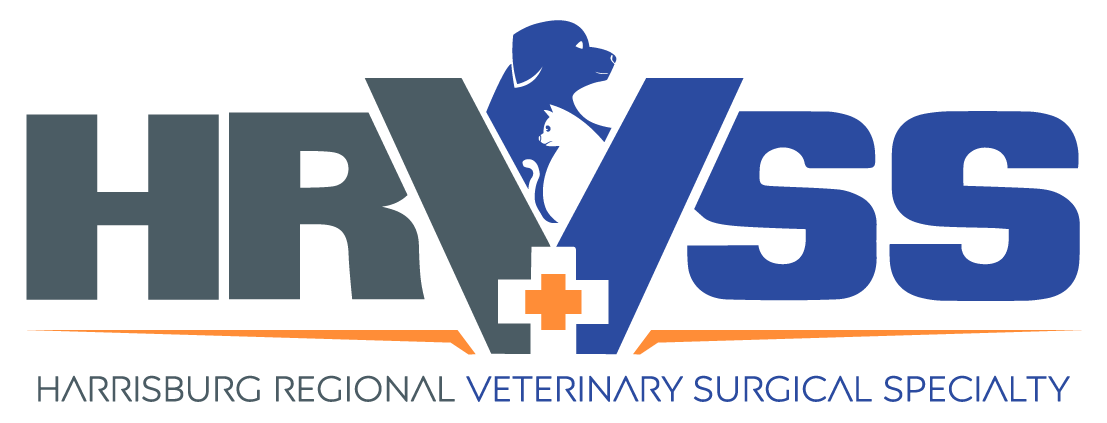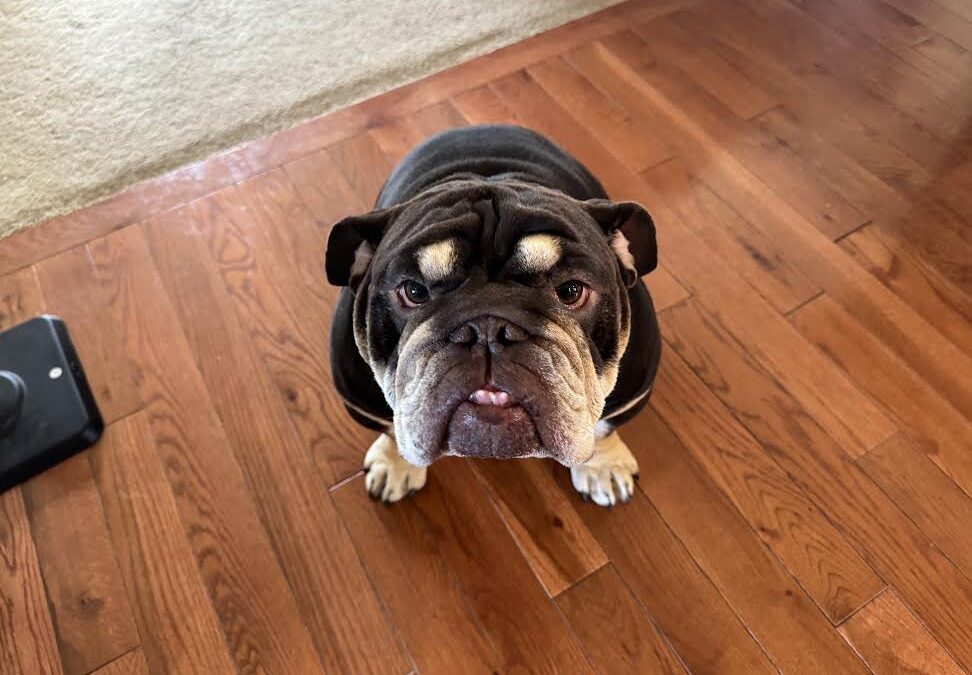Chewy, a 3 year old Bulldog, was in a strange situation.
He also had a strange condition: a “screw tail.”
What is that? Also called corkscrew tail, ingrown tail or tail fold dermatitis, it involves a convoluted, infected, smelly, and painful skin fold around the tail.
This creates a perfect environment for bacteria to thrive (warm, moist & dark), which leads to never-ending infections.
Chewy’s first screw tail removal
A family vet had attempted to partially remove it… which led to partial results.
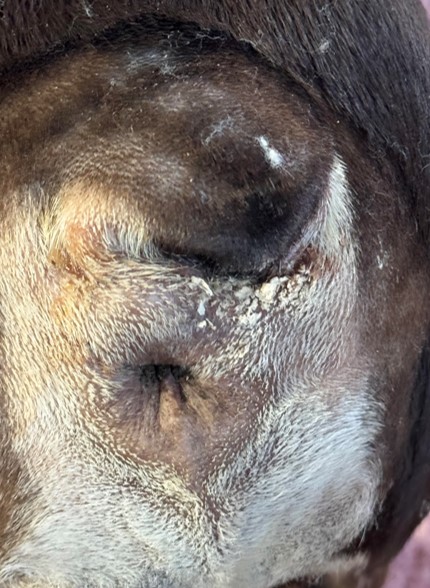
Chewy’s owner remembers: “Unfortunately, we were still having significant issues with infections along both sides and underneath the remaining stump.
The areas would turn red, get swollen, burst and drain, and then the pattern would repeat itself.
He has been on oral antibiotics numerous times since surgery.
This helped and cleared everything up, but about a week after antibiotics are finished problems returned.”
Local treatments are often suggested, yet they don’t do much long -term: “This is in spite of me cleaning the tail crevices 2 to 3 times a day with antiseptic wipes”.
Then the owner added steroid powder to the area.
She writes: “It was very bad. I didn’t realize how time consuming his tail management would be prior to having surgery. The partial tail amputation unfortunately was unsuccessful, as we still had several major issues. There was no doubt about it, he needed another surgery to have the entire tail removed.”
After 3 months of frustration, the client reached out to us.
Minor detail: she lives 3 hours away, in Maryland!
Now, that’s serious dedication!
Chewy’s second screw tail removal
Bulldogs have a higher risk of complications around anesthesia, so after implementing our usual “Bulldog” anesthesia protocol, we took Chewy to surgery.
It was a bit of an awkward surgery, since somebody had been there before…
So we removed all of the diseased tissue… or so we thought!
To our surprise, right when we thought we were done, we found a big patch of hairy skin in a deep recess, along the end of the spine, which we had cut to remove the rest of the screw tail.
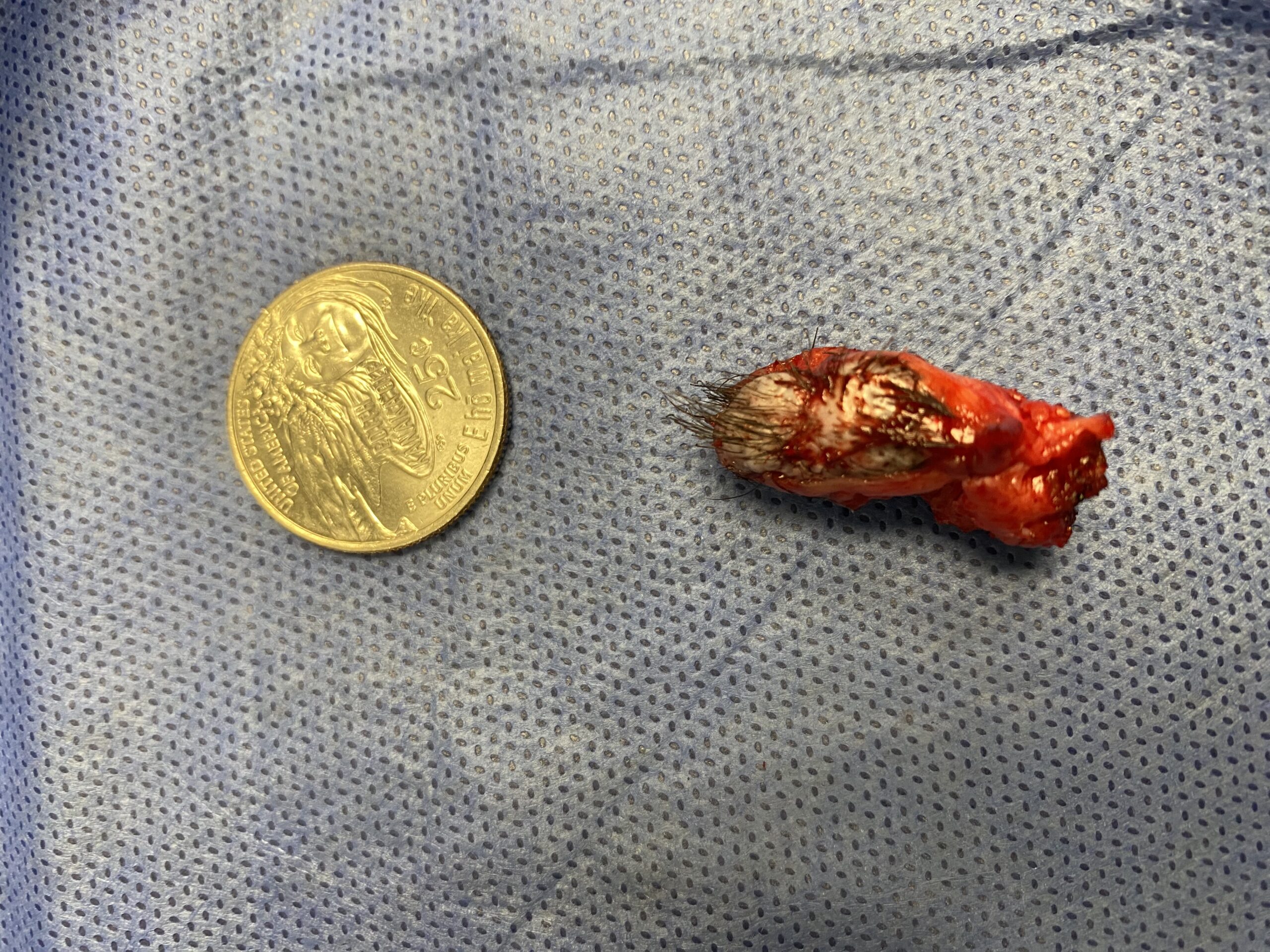
After removing the infected skin, we rinsed the area with sterile saline, then with a special antiseptic (called Simini), then more sterile saline
Before stitching the skin up, we took an important precaution: a culture.
A culture is a sterile swab of a suspicious area, so the lab can tell us if bacteria are present in the area, and more importantly, which antibiotic would take care of it.
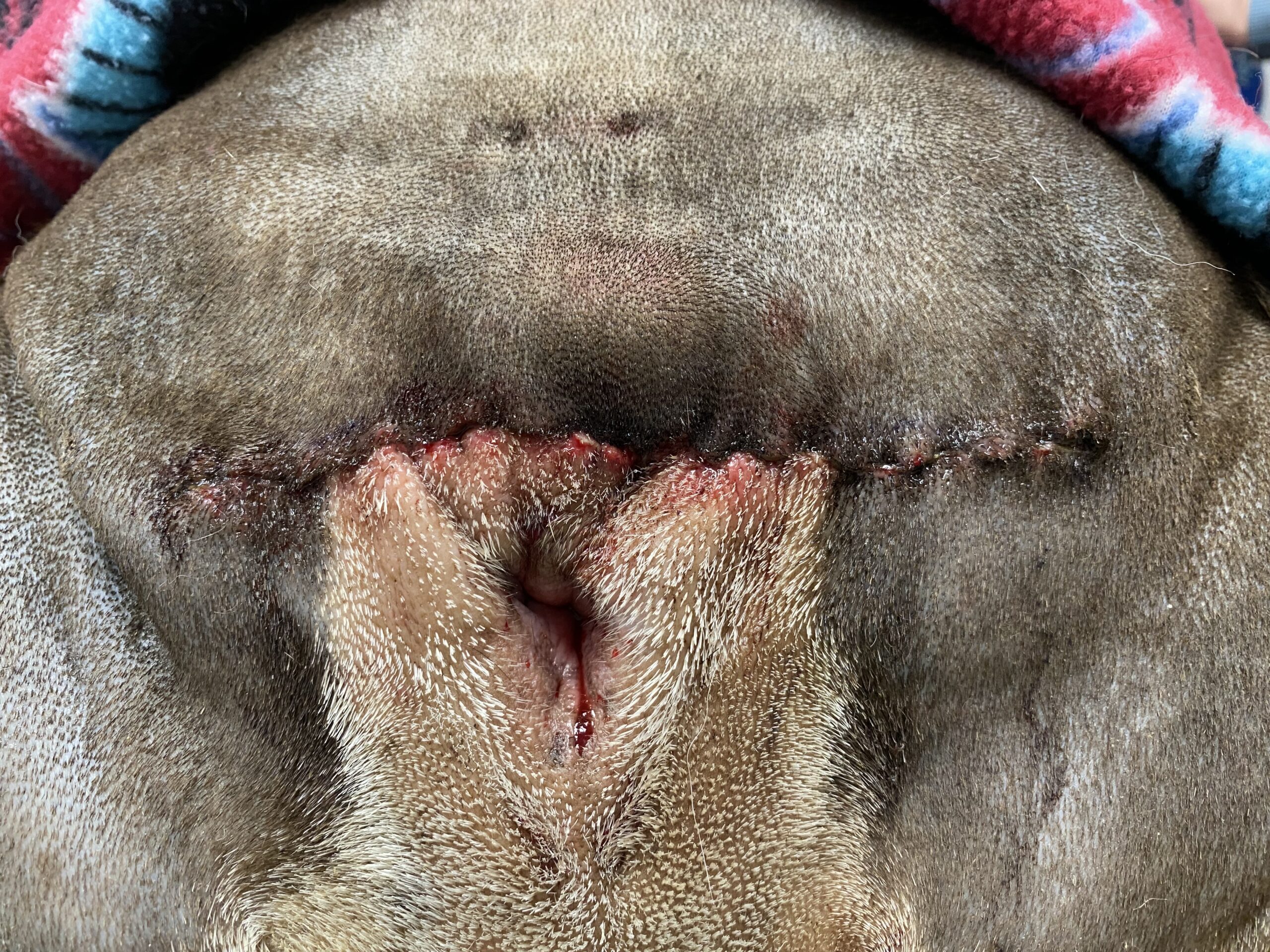
Chewy recovered smoothly from anesthesia, under the careful watch of our amazing nurses.
His owner recalls: “I was thrilled and relieved. I always worry about anesthesia in my Bulldogs, so him being awake and safe after surgery was reassuring.”
After a night in the hospital on IV antibiotics, pain medications, and fluids, Chewy went home the next day, with more pain medications and a pretty standard antibiotic.
A week after surgery, the culture revealed a nasty bacteria called Pseudomonas. So we had to switch to a stronger antibiotic.
And after 3 weeks, Chewy’s behind looked all healed up.
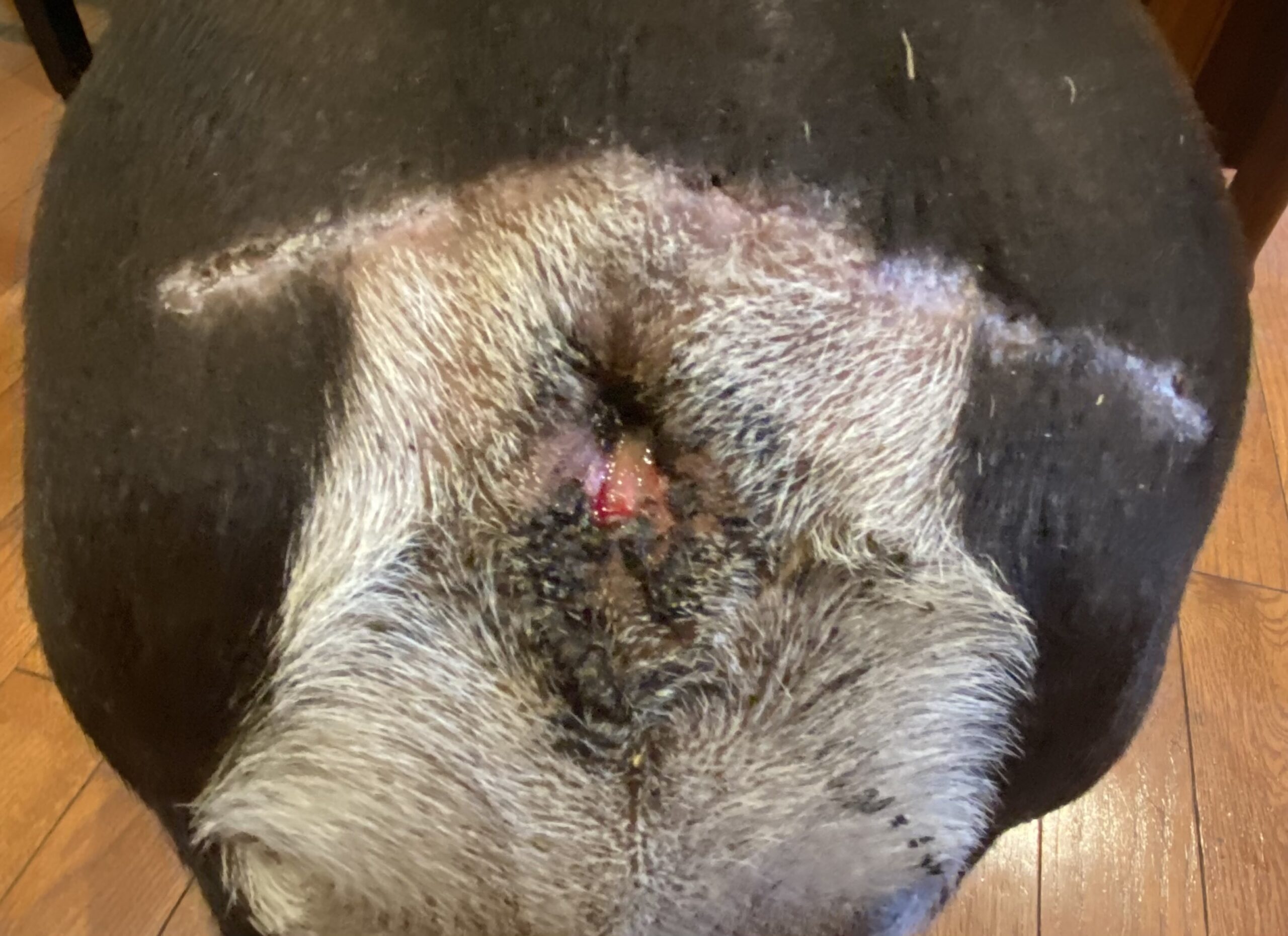
Chewy’s new lease on life
Over 6 months after surgery, Chewy is reportedly “doing great! He is much happier and much more comfortable now than he was before surgery.”
Here is a picture of his backend – basically the end result…
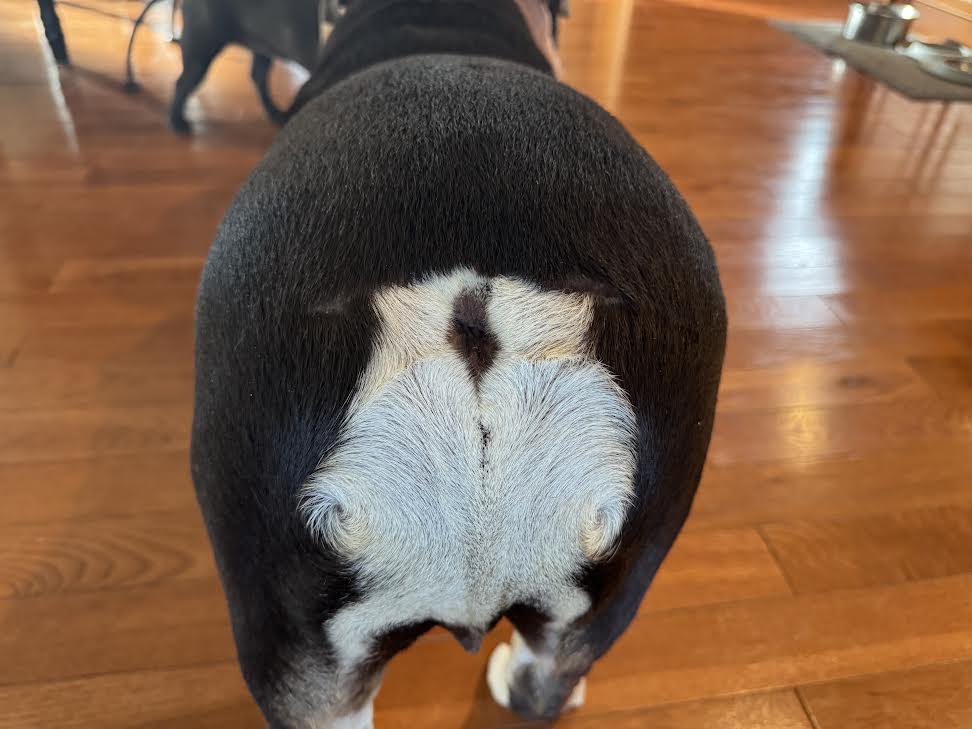
His owner concludes:
“I am grateful that I found Harrisburg Regional Veterinary Surgical Specialty. They were the first to culture his oozing infection, and it was discovered he had a very nasty bacteria that was only responsive to certain antibiotics. Finally he would be getting a course of antibiotics that would truly impact his situation.”
“No more nasty oozing! No more diapers! No more cleaning his tail area 3 times a day! He has great energy and attitude. His incision looks great and I think once his hair is back you won’t be able to really tell he had surgery. “
“It was worth the drive. I hope my dogs don’t ever need a major surgery ever again, but if they do, I will absolutely make the drive to Harrisburg, no question. The staff is fantastic. Dr. Zeltzman is amazing. Michelle, the surgical nurse, was fantastic and always available to answer my questions. The whole team is first class.”
If you would like to learn how we can help your pet with safe surgery and anesthesia, please contact us through www.HRVSS.com
Never miss a blog by subscribing here: www.HRVSS.com/blog
Phil Zeltzman, DVM, DACVS, CVJ, Fear Free Certified
Pete Baia, DVM, MS, DACVS
